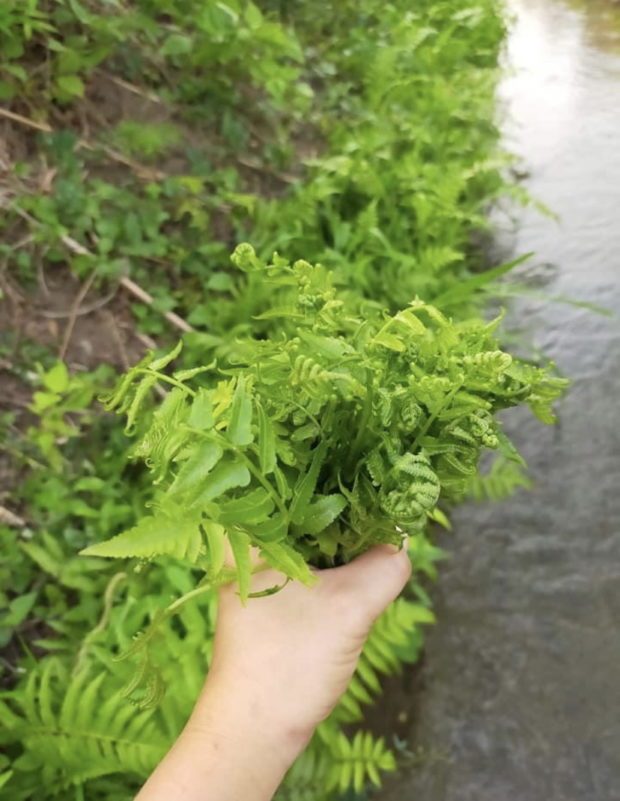
SURVIVAL FOOD “Pakpako” (wild fern), “kuhol” (golden snail) and “kalibbutu” (ant eggs) have become survival food for some residents of Kalinga province while their communities are on lockdown. PHOTOS COURTESY OF LORRAINE NGAO-I
TABUK CITY, Kalinga, Philippines — Quarantine may have restricted people from working or moving around, but rice farm pests like “kuhol” (golden apple snail) and “pakpako” (wild fern) have helped stretch the meals of families stuck at home in this capital city of Kalinga province.
Almost everything that grows in Kalinga is edible and these farm finds have kept people from starving, said Lorraine Ngao-i, supervising tourism operations officer of the province. She joined a group of residents in gathering kuhol and pakpako here last week.
Ngao-i, however, told pakpako gatherers to avoid the nonedible variety and the kuhol gatherers to go to ricefields or creeks that had not been polluted by pesticides.
The golden apple snail, which biodiversity experts call an “invasive alien species” in the country, was introduced from Florida and Latin America to Taiwan and the Philippines in the early 1980s by private snail farmers hoping to reap big profits exporting snails to Europe, according to the United Nations Food and Agriculture Organization (FAO).
“kuhol” (golden snail)
Sweet and spicy
The snails have become a natural supplement for rural folk although FAO says that “with only a few natural enemies to constrain them, the snails have rapidly developed into a serious pest in many areas of cultivated riceland in Asia.”
But foraging for snails has become ideal when people “are out of food and your stash of relief goods has run low,” Ngao-i said.
She said kuhol, cooked with coconut milk and mixed with chili and other condiments, had always been a popular recipe for families who love the sweet-and-spicy dish combo.
Families can prepare ferns as salad with vinegar dressing and topped with sliced salted eggs.
Foraging also makes up for the drop in supplies, such as Vitamin C tablets that are now rarely seen in drugstores and market shelves. In Kalinga, residents eat the weaver ant, locally known as “ayaga,” and its eggs (“kalibbutu”), which are rich in Vitamin C and high in protein.
The ants taste like a squirt of lime since they eat mango leaves, Ngao-I said, citing culinary research.
“kalibbutu” (ant eggs)